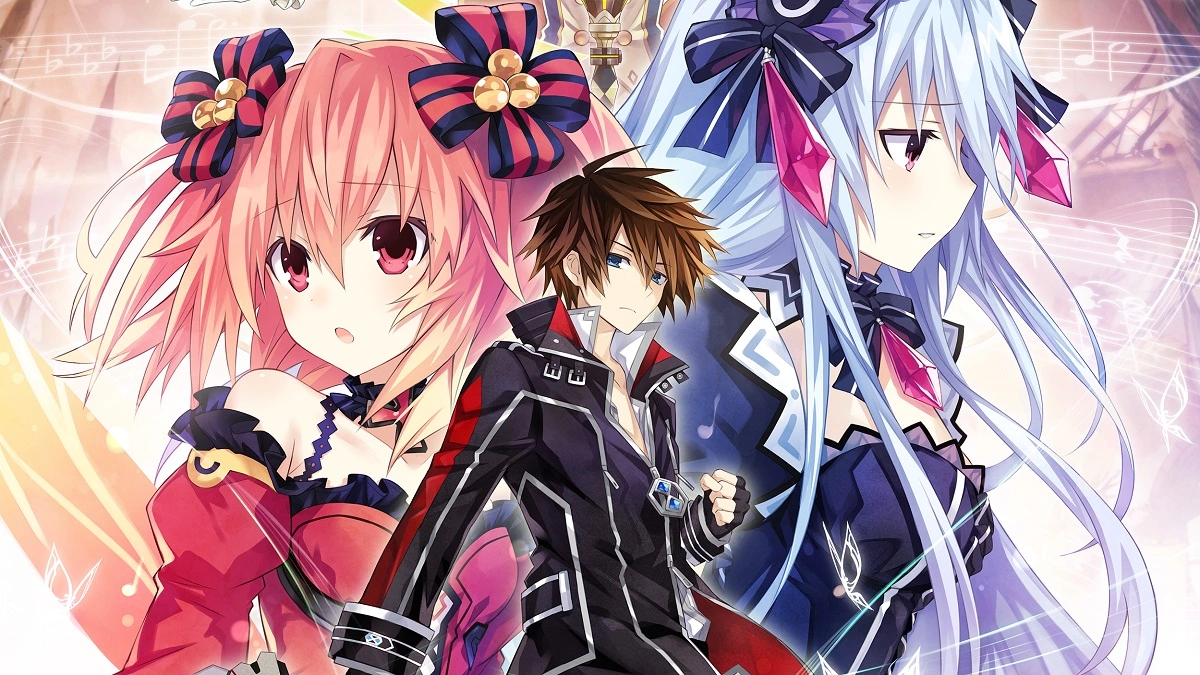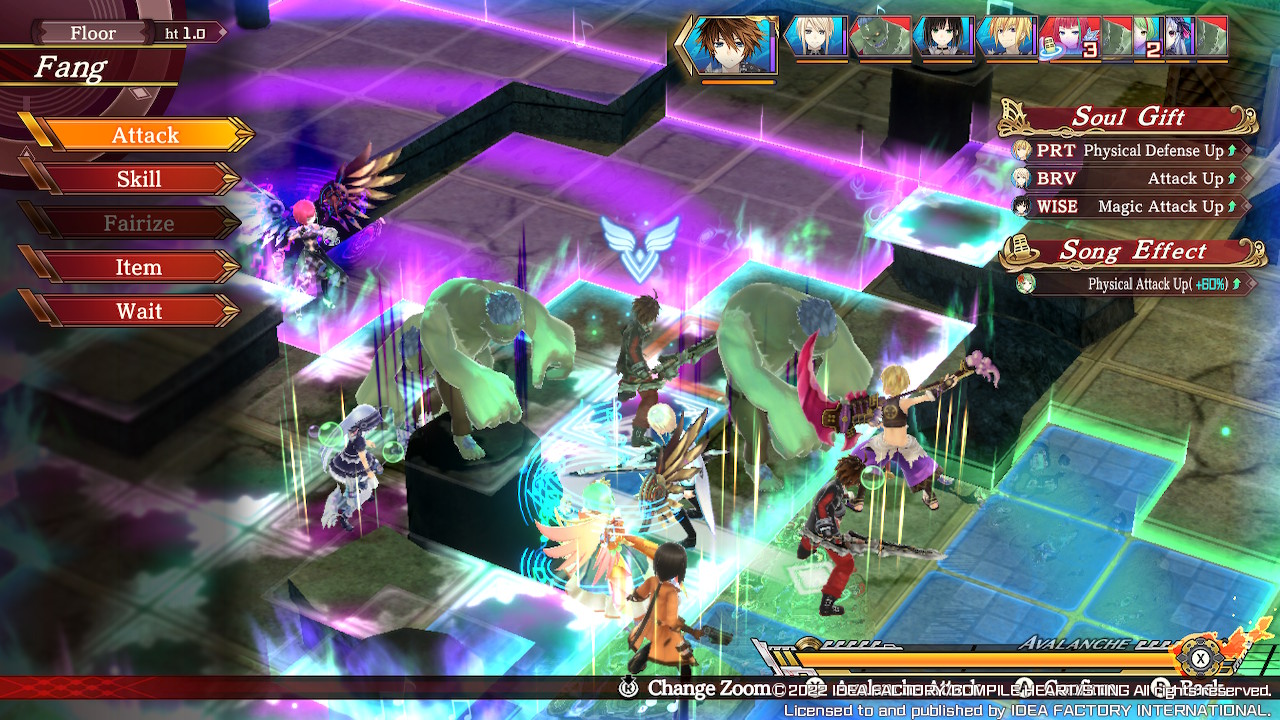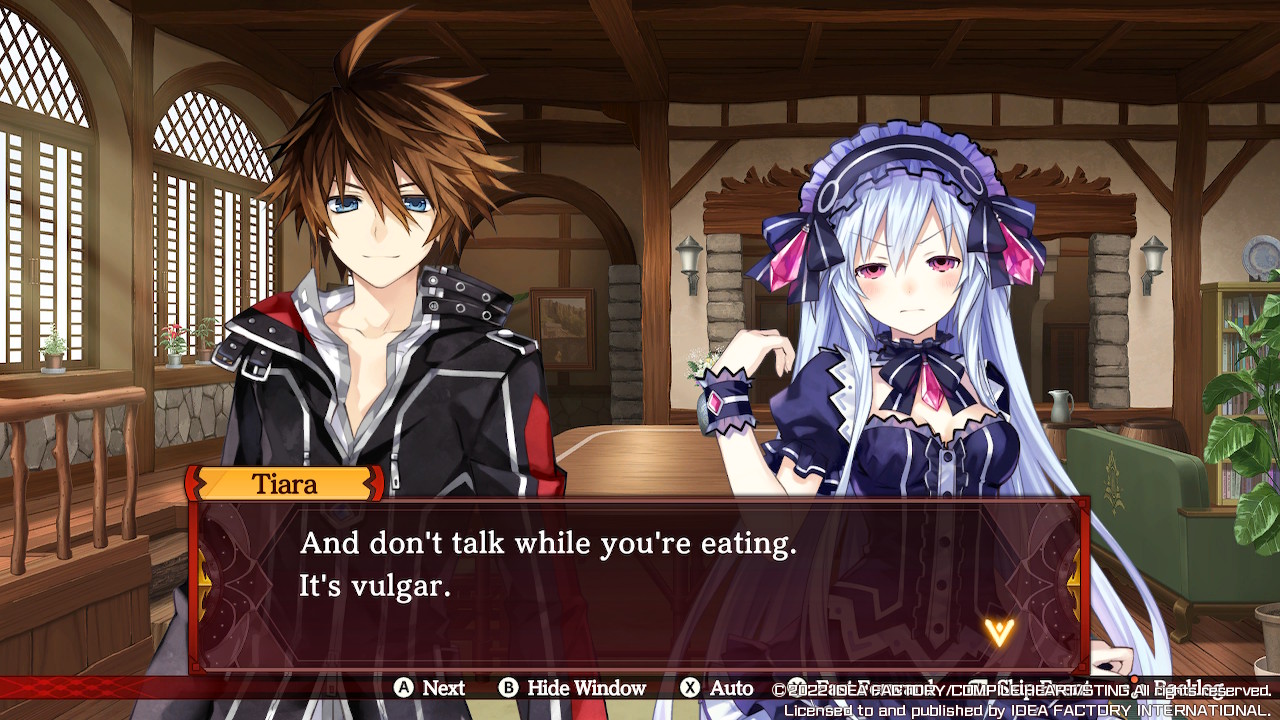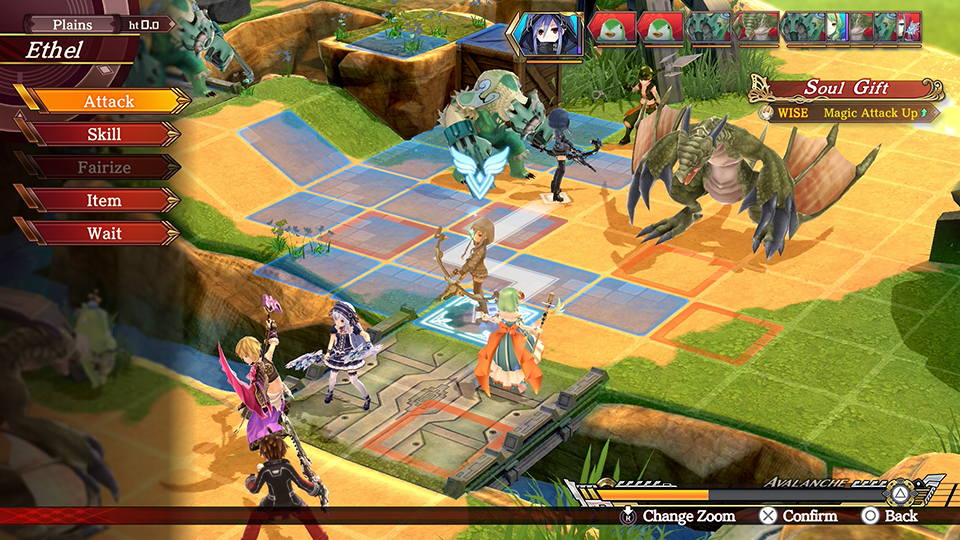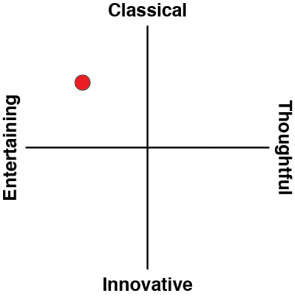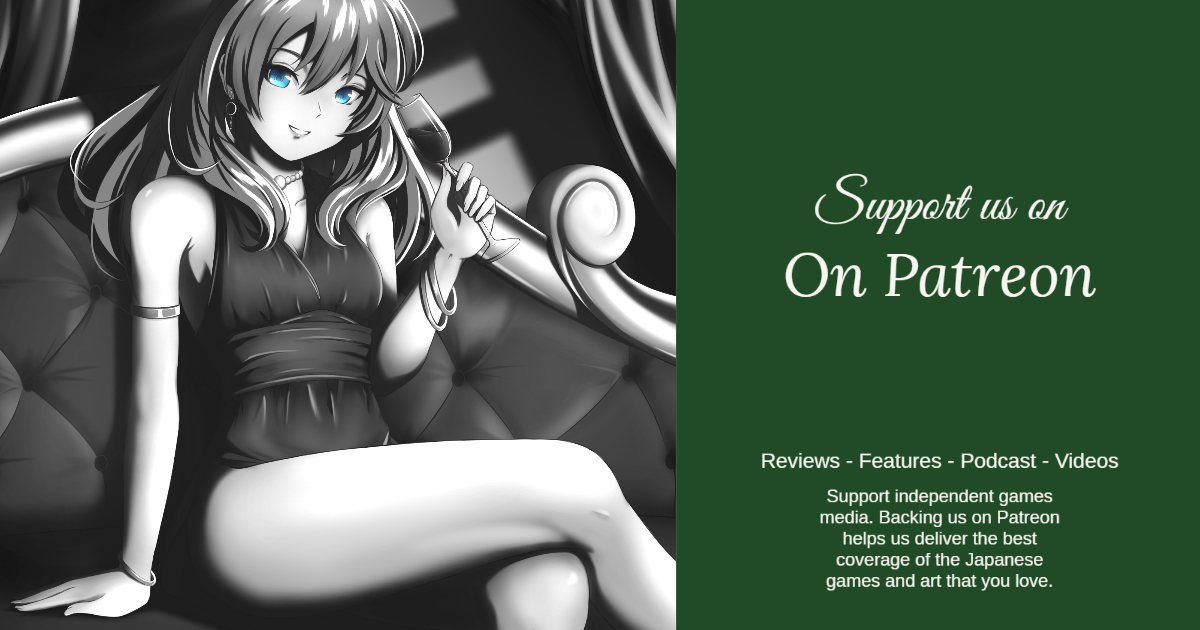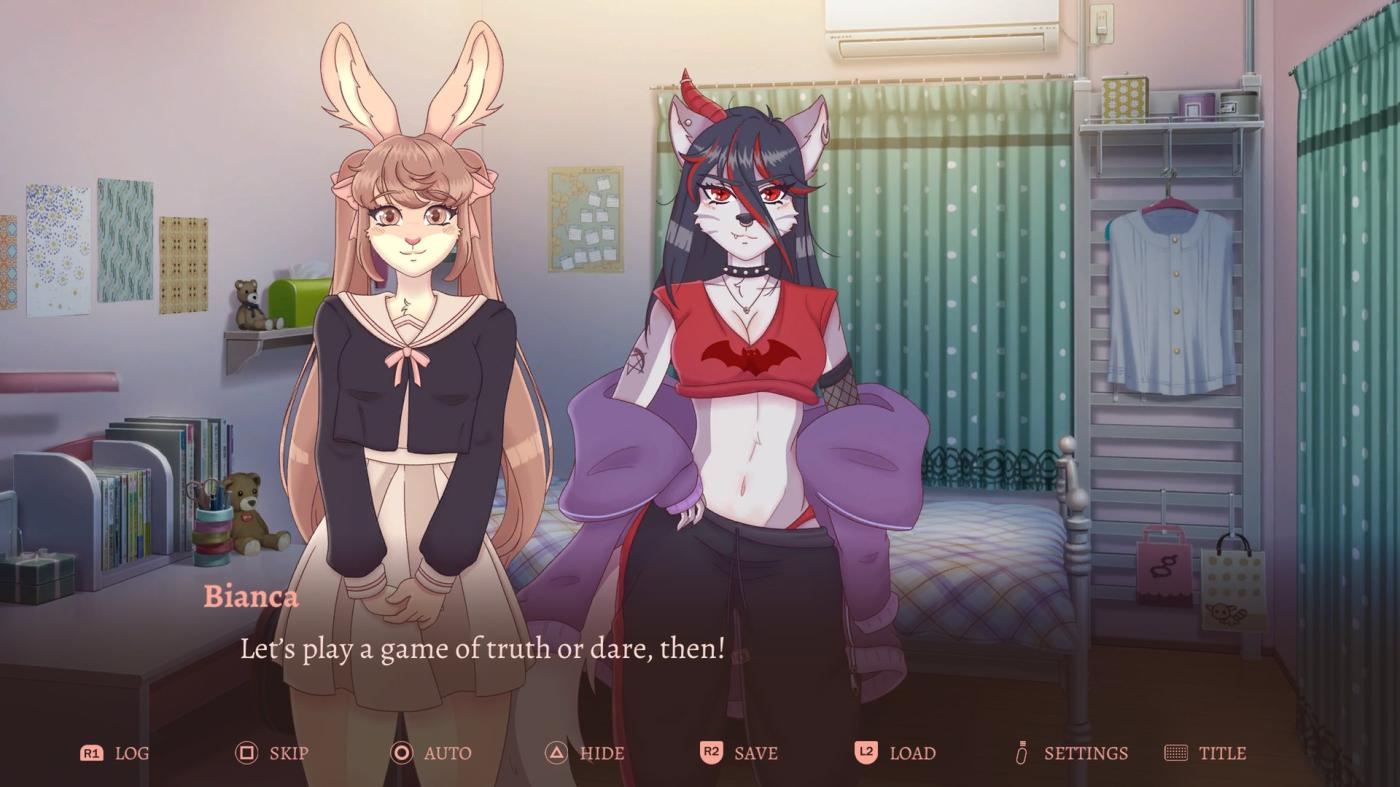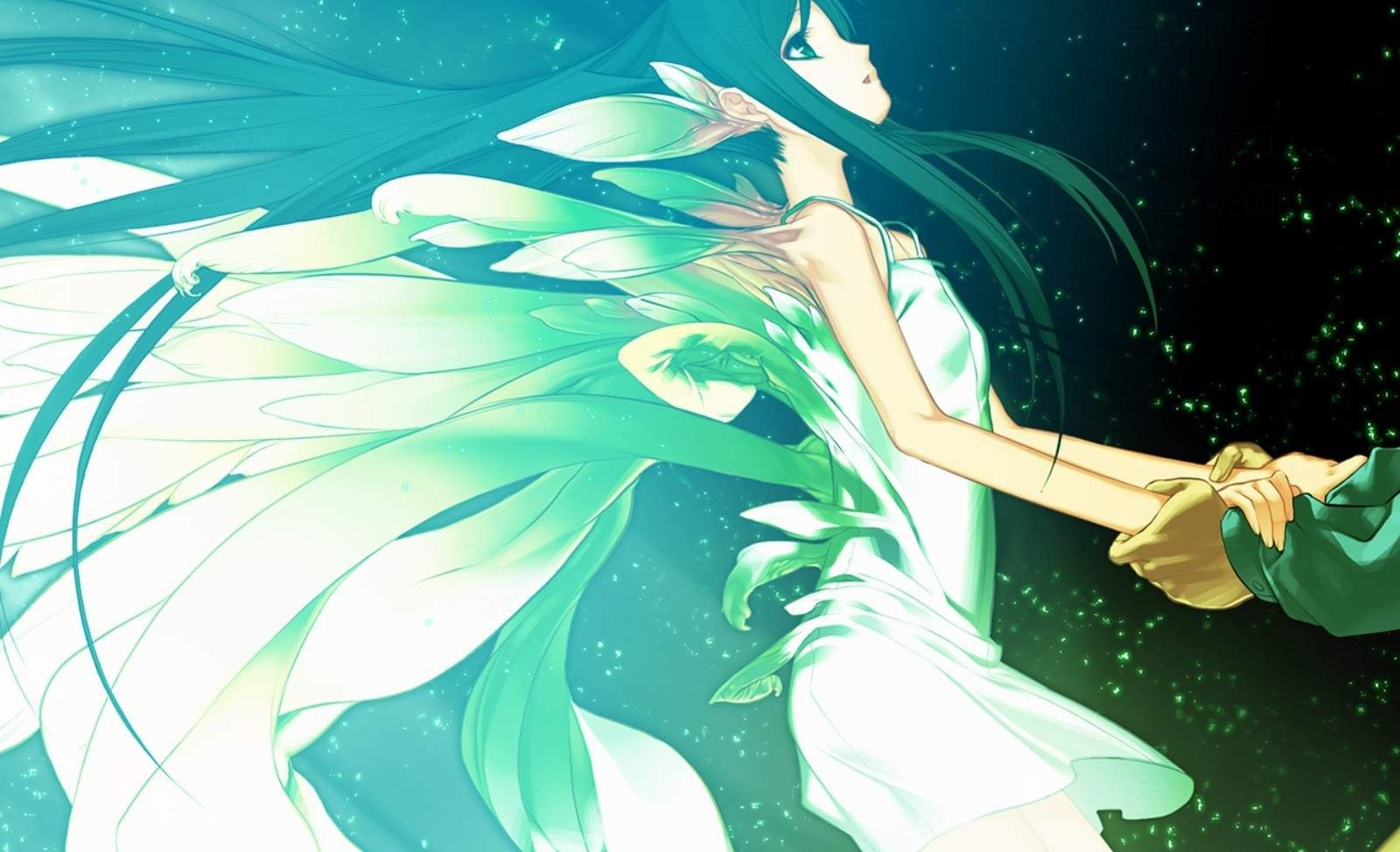I just want to start this review by saying that I love Tiara, the blue-haired secondary protagonist from the Fairy Fencer series (it’s a series now that there are two games). Like, I really, really, love Tiara. As far as anime female design goes, she’s my third favourite character ever, after Hatsune Miku and, of course, my own Dee Dee. Her character design is gorgeous, and while I know that this is a strange way to open a review, it’s actually pertinent. How much you enjoy Fairy Fencer F: Refrain Chord depends on how much you enjoy the characters. Part of their appeal is their stunning designs, and the rest of it is humour that is… well, it’s often eye-popping. You’re going to need to enjoy that to enjoy this game.
The original Fairy Fencer was a surprisingly ambitious effort by Idea Factory. It was the company’s attempt to take its own approach to JRPG design, and pair it up with some of the legends of the Japanese games industry. It featured Amano Yoshitaka as a concept artist, Uematsu Nobuo contributed some music, Inoue Toshiki was the writer, and Tsunako did the character design (including my beloved Tiara). That’s an all-star cast of legends there, and the resulting game was really, almost surprisingly good. Even if Hyperdimension Neptunia was a D-tier for you, Fairy Fencer had all the Idea Factory qualities you’d expect, but was also elevated by the talent, and to this day it’s probably the Idea Factory title you want to recommend to someone looking to figure out whether Idea Factory JRPGs are for them.
I don’t believe any of that creative team is back for Fairy Fencer F: Refrain Chord. However, it is a direct sequel and as such maintains much of the quality of its predecessor. You can play this one by itself, as it is a complete story, but having the background of all the characters is useful (and as the original Fairy Fencer is on Switch, you may as well play them both). It is an entirely different kind of game, though, being a tactics JRPG rather than a more traditional turn-based game, and the main developer this time around is Sting. Now, Sting previously worked with Idea Factory on Hyperdevotion Noire: Goddess Black Heart on the PlayStation Vita, and the heritage of that game is clear in this one. It too is a fairly by-the-numbers, but very entertaining tactics game.
The game kicks off with the main protagonist, Fang, having been arrested and thrown in prison. This is actually how the original Fairy Fencer kicked off too, so the intro scene seems to be a confirmation that Sting wasn’t going to rock the boat with the storytelling and characterisation. Fang remains a lazy lout, obsessed with little more than food and sleep. The difference is that unlike the original Fairy Fencer, he’s already familiar with the rest of the heroes, so the narrative doesn’t need to spend several hours reintroducing you to them all. It also means that Tiara shows up right at the start. Did I mention how much I love Tiara yet? One of my great regrets was the time I saw a promotional tapestry art of Tiara undressing in one of those anime shops in Nakano Broadway, and neglected to buy it…
Anyhow, I digress. Fang and the crew are still looking for fairies – swords imbued with the power and likeness of a fairy, and they remain a really colourful bunch that often seems to forget that the quest they’re on is reasonably serious. There’s the girl that seems to have an aversion to clothes, a burly male fairy that cooks up a storm, a robot (in a traditional fantasy world for… reasons), and, best of all, the sisterly rapport between Fang’s personal fairy companion, Eryn, and Tiara. Despite that overarching plot, the game seems to be more interested in throwing lengthy scenes that exist purely for fanservice. For example, there’s one where Fang helps Eryn search for her lost panties (don’t ask), or another one where Eryn and Tiara argue about their boob sizes (really don’t ask). Yes, it’s that kind of anime game, with that kind of humour. The two scenes I mention here occur within the first hour, and the pace doesn’t ease back from there. Now. I enjoy it for its ridiculous and raunchy nonsense. In fact, we don’t get this kind of game often these days, so it came across as downright refreshing in an odd way. It’s like Idea Factory came home. I know a lot of other people don’t get along with this kind of humour, and so consider yourselves warned as there’s no way to avoid it, but also I wish those people could just let go sometimes. Not every game needs to be serious, and sexualised humour (as well as the broader range of jokes the game pokes at otaku vices and attitudes) can be very funny.
I think that for this specific type of humour, Fairy Fencer is written well. Dialogue sequences might be a little long, but that is in service of the characterisation, and the only reason the humour works so well is that these characters are all decently developed and have the kind of clearly-defined personalities and quirks that allow them to work well within and contribute to the ensemble cast. Refrain Chord, like its predecessor doesn’t do anything unique, but it hits the brief well. Case-in-point: the fact that Tiara is of my favourite characters of all is, yes, partly because she’s cute as a button. But also because she’s a fun and quirky mix of vivacious and tsundere. If she wasn’t written genuinely well, I certainly wouldn’t have been hoping for her to show up in a sequel for a decade.
Outside of cut scenes, you’re basically pointing a cursor at locations around the world map and getting into battles. Refrain Chord keeps things pretty traditional in combat too. Anyone who has played a tactics JRPG will settle into the rhythms easily enough. The map is split up into a grid, and you move your units around in a turn-based fashion, using attacks and spells to damage opponents, buff your allies, heal wounded heroes, and so on. You benefit from attacking enemies from the side or behind, and when your characters have powered up enough you can have them enter a special transformed mode, where they’ll dish out even more damage.
There’s one unique addition that adds texture and tactics to the combat: there’s a “Muse” combat class. Muses don’t use weapons or magic. Rather, they use music to substantially improve the combat strength of allies within a certain radius. Things get really interesting when your Muse and your opponents have radii that overlap, because when that happens, the battlefield goes psychedelic, and any character caught in the hot zone starts dishing out some incredible damage. The problem is that the enemy can access that same booster, so positioning and blocking become critically important tactics. It’s a little hard to see what’s going on when this happens – especially if you’re playing in handheld mode – but the energy and music is such a sensory experience that the mild hit to usability is worth it. The performance dips during these moments are less pleasant, but as this is a turn-based JRPG, it’s also not the end of the world.
Perhaps because the game is designed around the tension between the Muses, when those booster effects are not in play, combat can take a while to play out. By default, before powerups and Muse boosters are applied, characters struggle to do much damage (while also taking a lot of punishment in return), so those battles can feel like a grind. It’s not unpleasant, just glacially slow-paced… and on that basis, I suspect that some will be left wanting for more snappy action.
Fairy Fencer F: Refrain Chord is a fine sequel that I never thought would happen. Yes, it doesn’t do anything too innovative or different. However, it does combine personable and genuinely enjoyable characters, raunchy and anime nonsense humour that I couldn’t help but laugh along with, and some simple, but clean tactical action. The long and short of it is that it has been a real joy to hang out with this gang again and go on one more hilariously juvenile adventure with them (especially Tiara. I love her so much).
